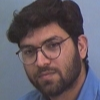International Journal of Engineering and Manufacturing (IJEM)
IJEM Vol. 8, No. 1, 8 Jan. 2018
Cover page and Table of Contents: PDF (size: 608KB)
An Insight into Beyond CMOS Next Generation Computing using Quantum-dot Cellular Automata Nanotechnology
Full Text (PDF, 608KB), PP.25-37
Views: 0 Downloads: 0
Author(s)
Index Terms
QCA, Quantum Dots, Quantum Cell, CMOS, Scaling, Clocking, Nanotechnology
Abstract
CMOS is a technology that has revolutionized the field of electronics. Over the time the processing technologies and design methodologies of CMOS devices have proved to be in full swing with the Moore’s law and the miniaturization paradigm. However, after surviving for more than five decades, CMOS is now facing challenges to live through the submicron ranges. The scaling in CMOS has reached a higher limit, showing adverse effects not only from physical and technological point of view but also from material and economical perspective. This drift inspires the researchers to look for new promising alternatives to CMOS which vow better performance, density and power consumption. One of the promising alternatives to digital designing in CMOS is the Quantum-dot Cellular Automata (QCA). QCA is a technology that involves no current transfer but works on electronic interaction between the cells. The QCA cell basically consists of quantum dots separated by certain distance and the entire transmission of information occurs via the interaction between the electrons localized in these quantum dots. In this paper the limitations to CMOS in submicron range and concepts for designing in QCA have been discussed. Further the building blocks are explained theoretically as well as using QCA Designer implementations with focus on cell interaction and clocking mechanisms.
Cite This Paper
Bisma Bilal, Suhaib Ahmed, Vipan Kakkar,"An Insight into Beyond CMOS Next Generation Computing using Quantum-dot Cellular Automata Nanotechnology", International Journal of Engineering and Manufacturing(IJEM), Vol.8, No.1, pp.25-37, 2018.DOI: 10.5815/ijem.2018.01.03
Reference
[1] Yong B. Kim, “Challenges for nanoscale MOSFETs and emerging nanoelectronics”, Transaction on Electrical and Electronic Materials, vol. 11, no. 3, pp. 93–105, 2010.
[2] J. Gautier, “Beyond CMOS: quantum devices”, Microelectronic Engineering, Volume 39, no. 1–4, December 1997, pp. 263-272.
[3] David Bishop, “Nanotechnology and end of Moore’s law”, Bell Labs Technical Journal, vol. 10, no. 3, pp. 23-28, 2005.
[4] G. E. Moore, “Cramming More Components Onto Integrated circuits”, Proceedings of the IEEE, vol. 86, no.1, pp. 82–85.
[5] John M. Shalf; Robert Leland, “Computing beyond Moore's Law” Computer, vol. 48, no. 12, pp. 14 - 23, 2015.
[6] H. Iwai, “End of the scaling theory and Moore's law”, Proc. of 16th IEEE International Workshop on Junction Technology, 2016, pp. 1-4.
[7] R.H. Dennard, F.H. Gaensslen, L. Kuhn, H.N. Yu, “Design of Micron MOS Switching Devices”, IEEE Intl. Electron Devices Meeting, Dec 1972, pp. 344.
[8] Nor Zaida Haron, Said Hamdioui, “Why is CMOS scaling coming to an END?” IEEE 3rd International Design and Test Workshop, 2008. IDT 2008.
[9] Hiroshi Iwai, “Materials and structures for future nano CMOS”, IEEE Conference on Nanotechnology Materials and Devices (NMDC), 2011, pp.14-18
[10] E.J. Nowak, “Maintaining the benefits of CMOS scaling when scaling bogs down”, Journal of Research and Development, pp.169-180, 2002
[11] S.G. Narenda, “Challenges and Design Choices in Nanoscale CMOS”, ACM Journal on Emerging Technologies in Computing Systems, vo1, no.1 pp.7-49, 2005
[12] Mehdi Askari, Maryam Taghizadeh, Khossro Fardad “Digital design using quantum-dot cellular automata (A nanotechnology method)”, IEEE International Conference on Computer and Communication Engineering, ICCCE, pp. 952-955, 2008
[13] Mark Horowitz, “What’s next after CMOS”, IEEE Hot Chips 19 Symposium (HCS), 2007.
[14] C.S. Lent, P.D. Tougaw, W. Porod, G.H. Bernstein, “Quantum Cellular Automata,” Nanotechnology, Vol. 4, no.1, pp. 49–57, 1993
[15] Wolfgang Porod, “Quantum-dot devices and quantum-dot cellular automata”, International Journal of Bifurcation and Chaos, vol. 7, no. 10, pp. 1147-1175, 1997.
[16] P.D. Tougaw, C.S. Lent, “Logical devices implemented using quantum cellular automata”, Journal of Applied Physics , vol. 75, no. 3, pp. 1818-1825, 1994.
[17] Heumpil Cho, Earl E. Swartzlander, “Adder and multiplier design in quantum-dot cellular automata”, IEEE Transactions on Computers, vol. 58, no. 6, pp. 721-727 2009
[18] Keivan Navi, Razieh Farazkish, Samira Sayedsalehi, Mostafa Rahimi Azghadi, “A new quantum dot cellular automata full-adder”, Microelectronics Journal, vol. 41, no. 12, pp. 820–826, 2010.
[19] Dariush Abedi, Ghassem Jaberipur, and Milad Sangsefidi, “Coplanar full adder in quantum-dot cellular automata via clock-zone-based crossover”, IEEE Transactions on Nanotechnology, vol. 14, no. 3, pp. 497-504, 2015
[20] Abbas Shahini Shamsabadi, Behrouz Shahgholi Ghahfarokhi, Kamran Zamanifar, Naser Movahedinia, “Applying inherent capabilities of quantum-dot cellular automata to design: D flip-flop case study”, Journal of Systems Architecture, vol. 55, no. 3, pp.180-187, 2009.
[21] Michael Gladshtein, “Quantum-dot cellular automata serial decimal processing-in-wire: Run-time reconfigurable wiring approach” Microelectronics Journal, vol. 55, pp. 152–161, 2016
[22] R. Landauer, “Irreversibility and Heat Generation in the Computing Process”, IBM Journal of Research and Development, vol. 5, no. 3, pp. 183-191, 1961.
[23] C.H. Bennett, “Logical Reversibility of Computation”, IBM Journal of Research and Development, vol. 17, pp. 525-532, 1973
[24] R. Feynman, “Quantum Mechanical Computers,” Optical New, pp. 11- 20, 1985.
[25] Firdous Ahmad, Ghulam Bhat, Hossein Khademol hosseini, Saeid Azimi, Shaahin Angizi, Keivan Navi, “Towards single layer quantum-dot cellular automata adders based on explicit interaction of cells”, Journal of Computational Science , vol. 16, pp. 8–15, 2016.
[26] M. R. Beigh, M. Mustafa, “Design and Analysis of a Simple D Flip-Flop Based Sequential Logic Circuits for QCA Implementation”, IEEE Conference on Computing for Sustainable Global Development (INDIACom), 2014, pp. 536-540.
[27] A. Roohi, R. Zand, S. Angizi, and R. F. Demara, "A Parity-Preserving Reversible QCA Gate with Self-Checking Cascadable Resiliency," IEEE Transactions on Emerging Topics in Computing, 2016
[28] B. Sen, M. Dutta, and B. K. Sikdar, "Efficient design of parity preserving logic in quantum-dot cellular automata targeting enhanced scalability in testing," Microelectronics Journal, vol. 45, pp. 239-248, 2014.
[29] A.O. Orlov, I. Amlani, R.K. Kummamuru, R. Ramasubramaniam, G. Toth, C.S. Lent, et al., "Experimental demonstration of clocked single-electron switching in quantum-dot cellular automata," Applied Physics Letters, vol. 77, pp. 295-297, 2000.
[30] A. O. Orlov, R. K. Kummamuru, R. Ramasubramaniam, G. Toth, C. S. Lent, G. H. Bernstein, et al., "Experimental demonstration of a latch in clocked quantum-dot cellular automata," Applied Physics Letters, vol. 78, pp. 1625-1627, 2001.
[31] B. Bilal, S. Ahmed, V. Kakkar, “Optimal Realization of Universality of Peres Gate using Explicit Interaction of Cells in Quantum Dot Cellular Automata Nanotechnology,” International Journal of Intelligent Systems and Applications, vol. 9, no. 6, pp. 75-84, 2017.
[32] B. Bilal, S. Ahmed, V. Kakkar, “QCA Based Efficient Toffoli Gate Design and Implementation for Nanotechnology Applications,” International Journal of Engineering and Technology, vol. 9, no. 3s, pp. 84-92, 2017.


